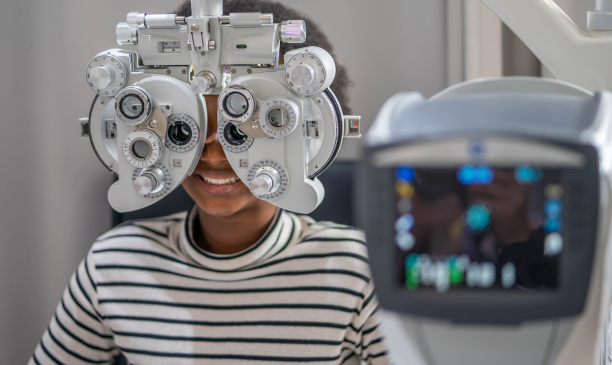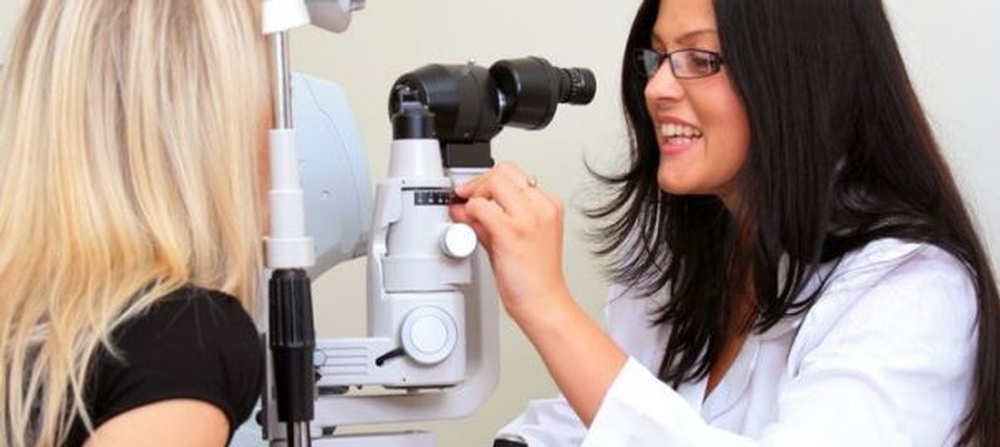Trustworthy Opticore Optometry: Elevating Your Eye Health Experience
Trustworthy Opticore Optometry: Elevating Your Eye Health Experience
Blog Article
The Comprehensive Eye Exam: What to Anticipate Throughout Your Visit to the Eye Doctor
A visit to the eye doctor for an extensive eye test is even more than a regular exam; it is a crucial action in securing your visual health. From the first discussion of your medical background to the precision of the aesthetic skill examination, each component of the examination offers a details objective. What precisely occurs during the eye wellness analysis, and exactly how does it affect the prescription process? Recognizing these elements is essential for those who wish to keep optimal vision. As we discover each component, the importance of follow-up recommendations will likewise end up being clear.
First Examination
The first assessment during an eye exam functions as a critical foundation for recognizing a person's visual health and wellness demands. This stage sets the tone for the whole evaluation process, enabling the eye doctor to gather vital details regarding the client's case history, way of life, and particular vision concerns. By meticulously assessing any type of pre-existing conditions, medications, or previous surgeries, the eye treatment expert can tailor the examination to resolve individual demands properly.

In addition, the preliminary consultation is an opportunity for people to articulate any kind of worries or questions, cultivating a collective connection with their health care copyright. This communication not just makes certain that the client really feels informed and comfy but also empowers them to get involved proactively in their eye health administration. Collectively, these conversations enable the eye doctor to devise a customized examination plan, making certain optimum care and exact medical diagnosis.
Aesthetic Skill Test
Beginning the core parts of an eye assessment, the visual skill examination is created to examine the intensity and clarity of a patient's vision. This critical evaluation assists identify exactly how well an individual can discern letters or symbols at a standard range, generally making use of a Snellen graph (Opticore Optometry). The graph comprises rows of letters that reduce in size inside out, with the person positioned at a normal distance of 20 feet
During the test, the client is asked to cover one eye and check out out loud the tiniest line of letters they can see plainly. This process is duplicated for the other eye. The outcomes are videotaped as a fraction, with 20/20 vision showing normal visual skill-- where the client can see at 20 feet what a person with regular vision can see at that distance.
The visual acuity test additionally recognizes potential refractive mistakes such as hyperopia, myopia, or astigmatism, which may require restorative lenses. By developing a baseline of visual efficiency, the test is a crucial analysis tool that helps the eye care specialist in creating a suitable therapy plan customized to the client's distinct aesthetic requirements.
Eye Health Assessment
Adhering to the visual skill examination, an extensive eye health assessment is carried out to ensure the general well-being of the eyes. This important segment of the eye examination includes a complete analysis of both the external and internal frameworks of the eye.
Via the usage of ophthalmoscopy or fundus digital photography, the retina, optic nerve, and blood vessels are meticulously examined. In lots of cases, pupil expansion is done to improve visibility of the interior eye structures, although this may result in momentary light sensitivity for the individual.
Furthermore, intraocular stress is measured to screen for glaucoma risk. This is normally done utilizing tonometry, which can find raised stress degrees that could recommend possible damage to the optic nerve. Collectively, these assessments form a thorough analysis to keep ocular wellness.
Refraction and Prescription
Just how does one ensure optimum vision? An important action hinges address on the process of refraction and getting an exact prescription. Refraction is an advanced treatment performed by eye care specialists to determine the precise lens power required to correct refractive errors such as nearsightedness, hyperopia, astigmatism, and presbyopia. The objective of this treatment is to examine just how light bends as it passes via the eye, allowing the specialist to determine whether restorative lenses are essential for enhanced visual acuity.
During the refraction process, the client is asked to check out a phoropter, a tool that consists of different lenses. The specialist will methodically transform these lenses and ask the client to contrast clearness between alternatives till the very best possible vision is attained. This procedure is important in crafting an exact prescription that specifies the proper lens power for spectacles or contact lenses.
The prescription originated from this treatment not just optimizes vision yet additionally functions as a foundation for choosing ideal corrective glasses. It is important to make certain that prescriptions are consistently updated, as adjustments in vision can happen gradually, emphasizing the relevance of regular eye examinations. This careful attention to information helps maintain clear, comfy vision in life.
Follow-Up Suggestions

During a follow-up visit, the eye doctor will certainly conduct a collection of tests to assess visual acuity and look for any modifications in vision that might necessitate an upgrade to the prescription. In addition, the follow-up supplies a possibility to discuss any type of discomfort or concerns experienced with current eyewear. Adjustments can be made to ensure convenience and efficiency, whether via lens modification or framework changes.
For clients with continuous conditions such as glaucoma, diabetes-related eye issues, or macular deterioration, even more regular follow-ups might be required. These appointments are crucial for handling and potentially slowing down the progression of eye disease. Following these referrals can substantially add to keeping aesthetic health and preventing long-lasting problems.
Conclusion
The thorough eye exam is a crucial procedure for maintaining aesthetic wellness, incorporating an in-depth assessment of clinical history and vision concerns. Secret components include the aesthetic acuity examination, which evaluates eyesight quality, and the eye health and wellness analysis, which examines the general problem of the eyes.
A check out to the eye physician for an extensive eye examination is more than a routine exam; it is a crucial step in protecting your aesthetic health and wellness.Kicking off the core components of an eye evaluation, the aesthetic acuity examination is designed to evaluate the sharpness and quality of an individual's vision.Complying with the visual skill test, a thorough eye health assessment is carried out to guarantee the overall health of the eyes. These visits permit the eye care specialist to keep an eye on adjustments in vision, update prescriptions, and examine the total health and wellness have a peek here of the eyes. Secret elements include the aesthetic skill examination, which evaluates vision clarity, and the eye health analysis, which checks out the general problem of the eyes.
Report this page